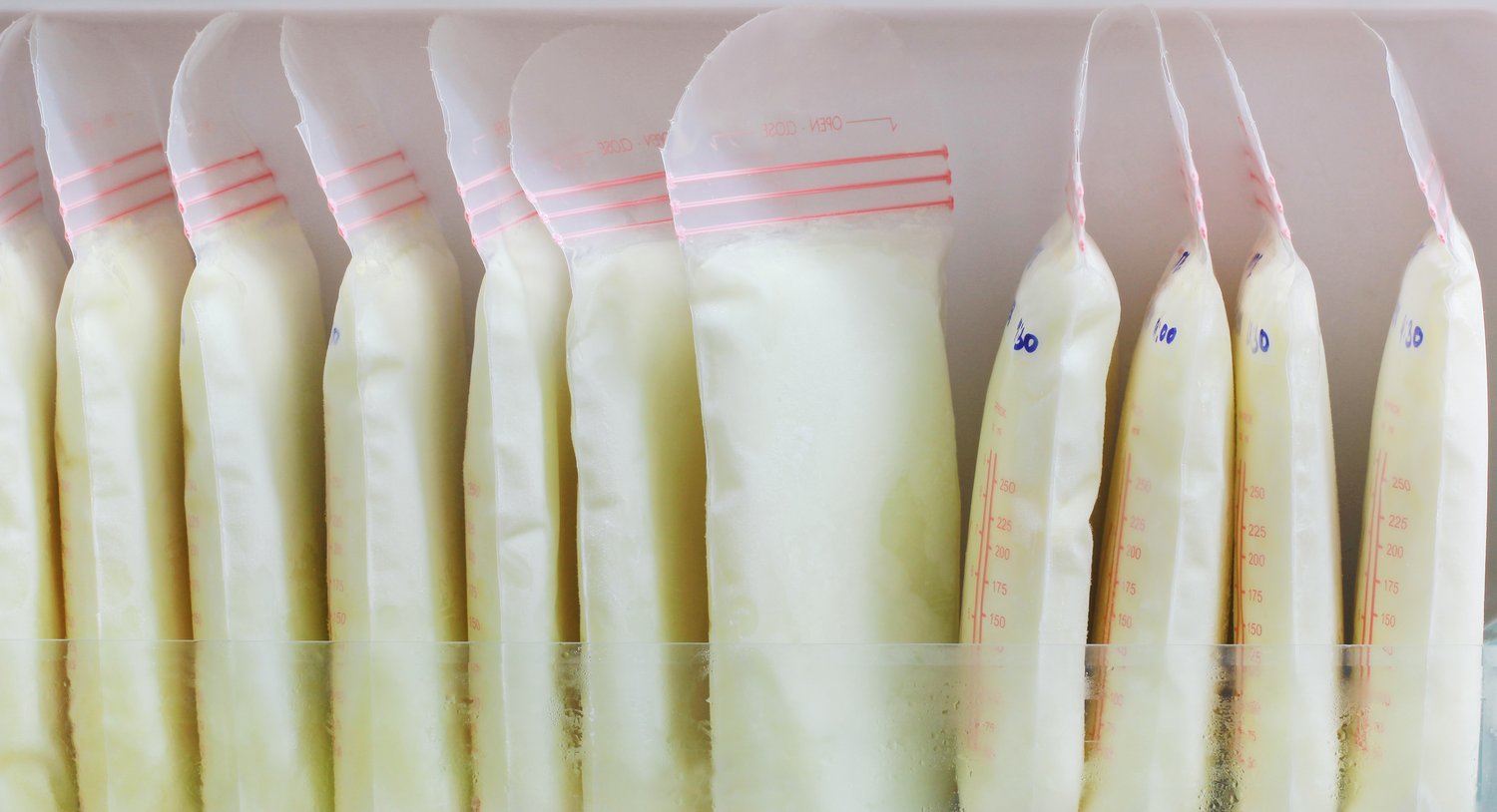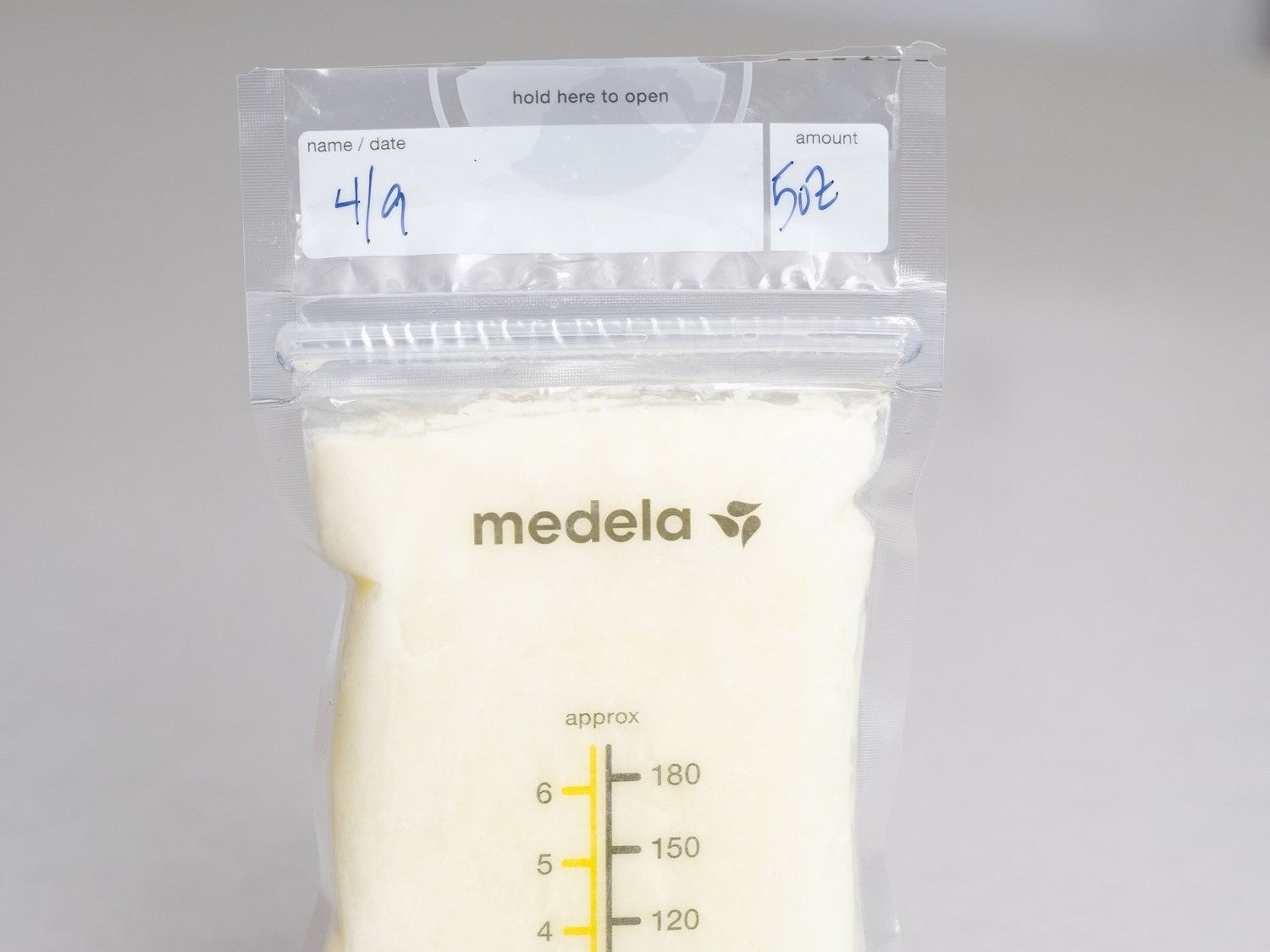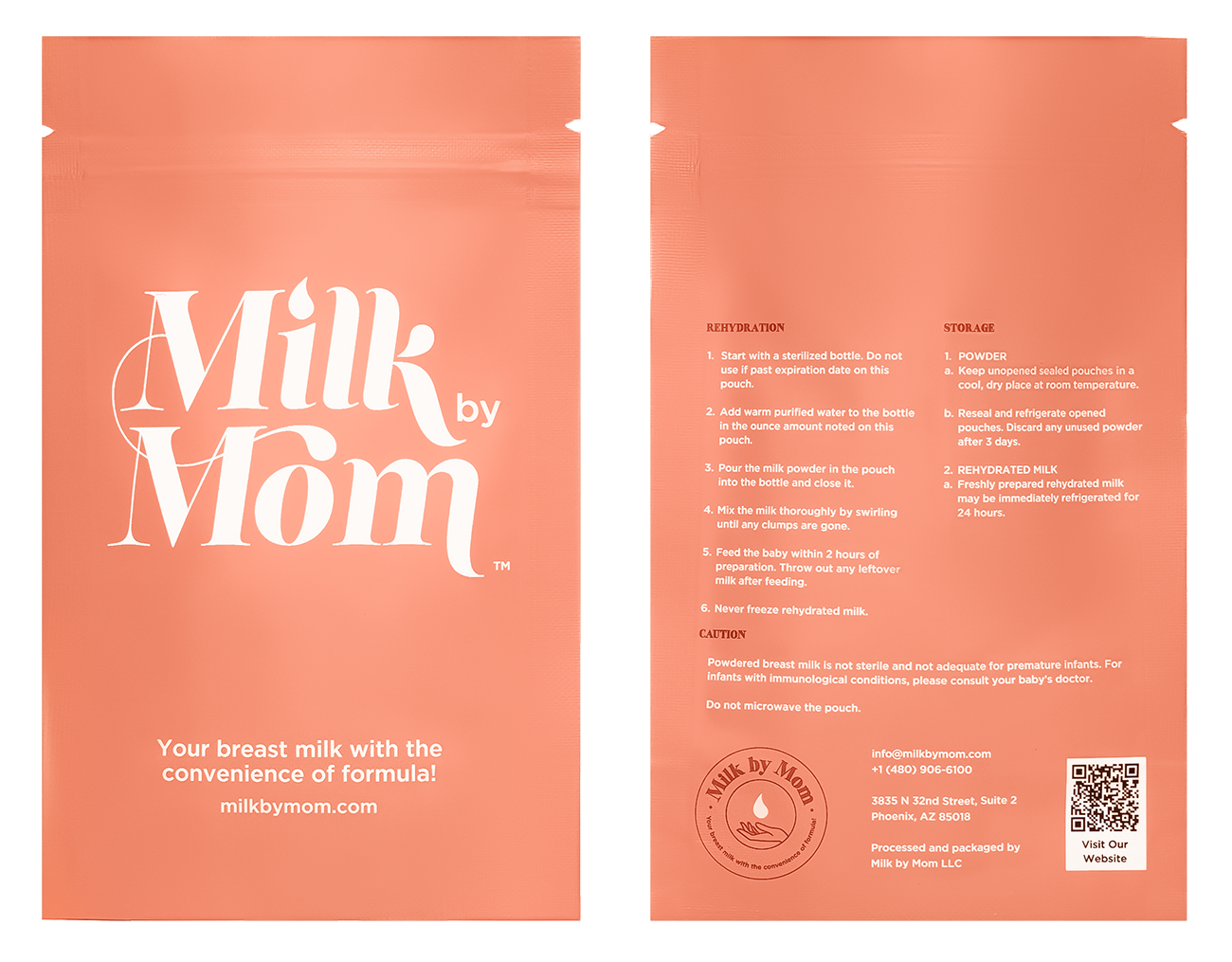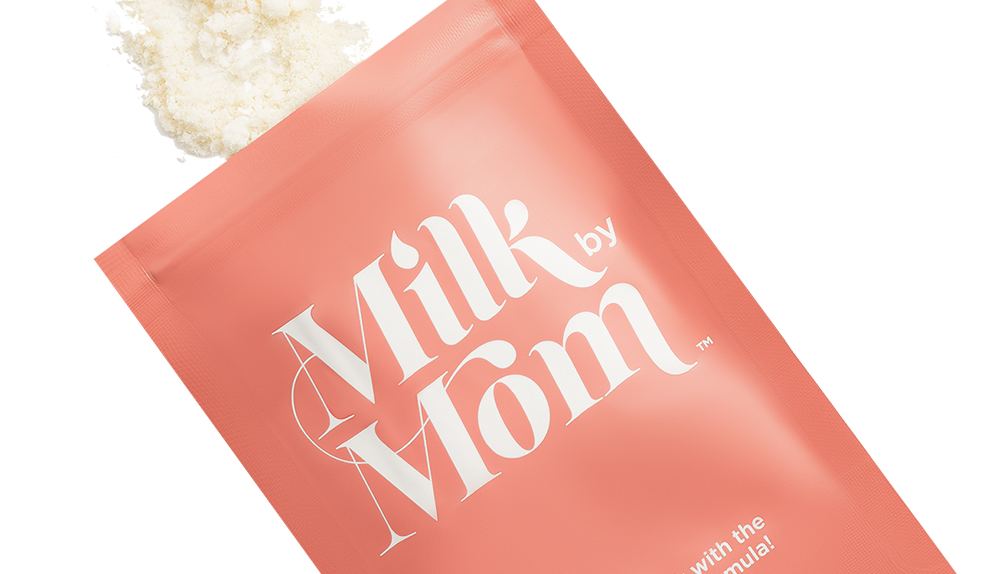
Our Process
Our Process
Freeze-drying is a four-step process that removes the water in frozen breast milk and converts it into powder.
1. Freeze
Your breast milk is frozen at a very low temperature (below -40 degrees Fahrenheit).
2. Vacuum
Reduced pressure within the freeze-drying chamber creates a deep vacuum.
3. Dry
(Sublimation) Adding a small amount of heat removes the water from the frozen milk, turning the ice into water vapor.
4. Package
Breast milk powder is vacuum-sealed in a mylar bag to protect it from moisture, oxygen, UV, and contamination.

When we receive your frozen breast milk we weigh it, log the temperature, catalog it into our system, and label each bag – including any notes we'll include on the final label if you choose a bag-for-bag packaging. Each customer's milk is processed individually, and our equipment is thoroughly sanitized between each customer’s and every batch to prevent cross-contamination.
Next, we place your frozen liquid milk in a freeze dryer that removes the water through a process known as sublimation. Sublimation preserves the nutritional quality of your breast milk better than standard dehydration when it's converted into powder.

Once the freeze-drying process is complete, we package your breast milk powder into convenient, resealable pouches. You decide whether to have your milk packaged individually bag-for-bag (4, 5, 6 oz) pouches (or any combination of these sizes).
Clear instructions outlining how to rehydrate your milk to its exact original consistency are printed on your pouches. Your freeze-dried milk has a three-year shelf life with the expiration date printed on every pouch. It should be stored in a cool , dry place at room temperature, with no need for refrigeration. Once you receive your freeze-dried breast milk, use it for bottle preps or incorporate it into solid foods anytime for a nutritional boost

We strive to be completely transparent with all the details to make sure you are confident in our services. We carefully follow a sterile process when handling your breast milk. No momma’s milk will ever touch another’s. Our process and facility is compliant with standards set by the Centers for Disease Control and Prevention (CDC), the Human Milk Banking Association of North America (HMBANA), and the U.S. Food and Drug Administration (FDA).
Recent Articles
View all-

How Long Does Freeze-Dried Breast Milk Last? Wh...
Breast milk is precious, but storing it shouldn’t feel like a full-time job. Between rotating freezer bags, tracking thaw times, and navigating spills or power outages, it can start to...
How Long Does Freeze-Dried Breast Milk Last? Wh...
Breast milk is precious, but storing it shouldn’t feel like a full-time job. Between rotating freezer bags, tracking thaw times, and navigating spills or power outages, it can start to...
-

The Power of Donated Breast Milk: Nourishing Be...
If you’ve ever wondered what to do with your extra breast milk you're not alone. Donating it can make an extraordinary difference. For babies born early or with health challenges,...
The Power of Donated Breast Milk: Nourishing Be...
If you’ve ever wondered what to do with your extra breast milk you're not alone. Donating it can make an extraordinary difference. For babies born early or with health challenges,...
-

Why Benefit Brokers Are Adding Freeze-Dried Bre...
Let’s be real—today’s benefit game isn’t just about who's got the cheapest premiums. Employers want emotionally resonant, real-life problem-solving benefits. Especially when it comes to supporting working parents. And surprise:...
Why Benefit Brokers Are Adding Freeze-Dried Bre...
Let’s be real—today’s benefit game isn’t just about who's got the cheapest premiums. Employers want emotionally resonant, real-life problem-solving benefits. Especially when it comes to supporting working parents. And surprise:...


